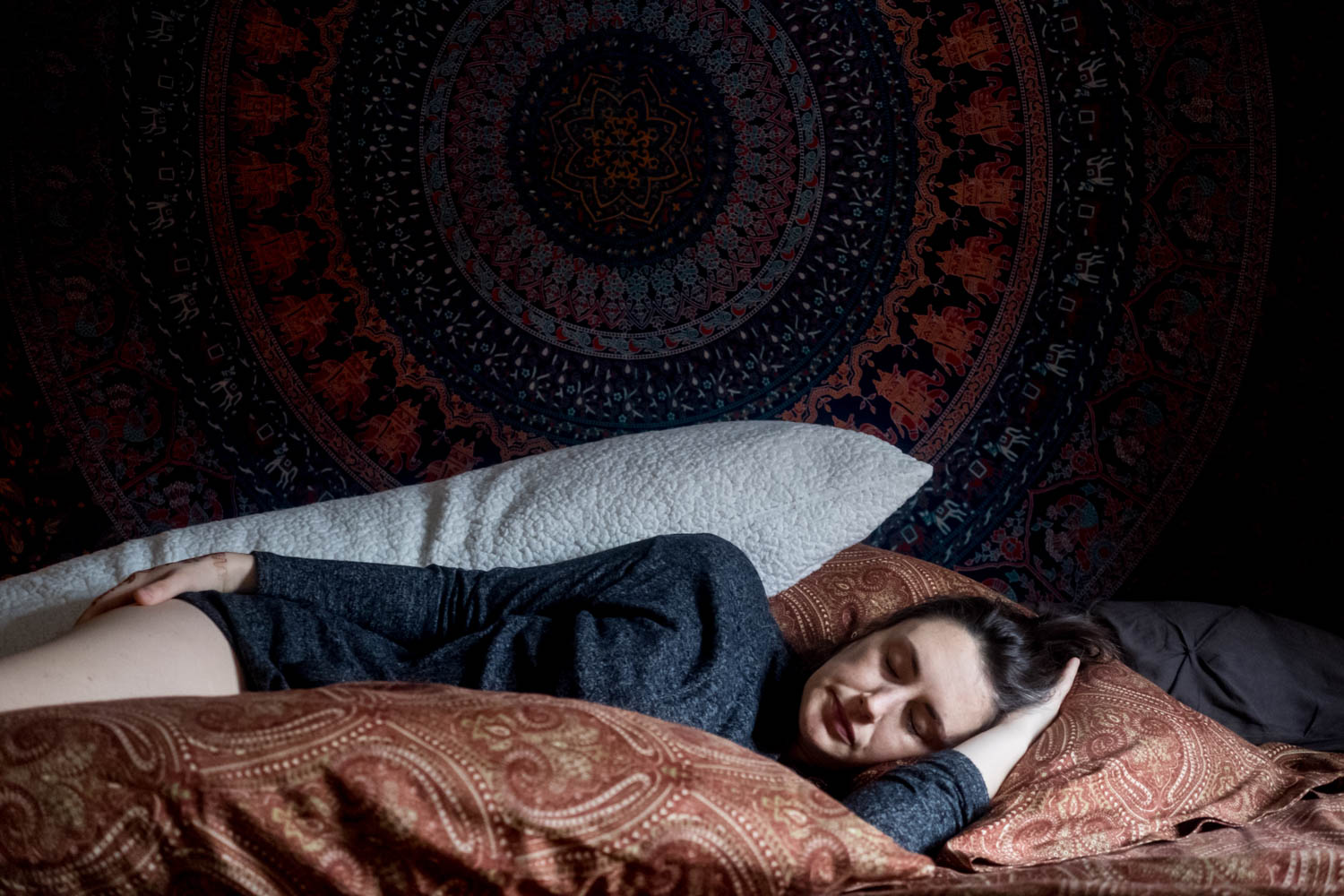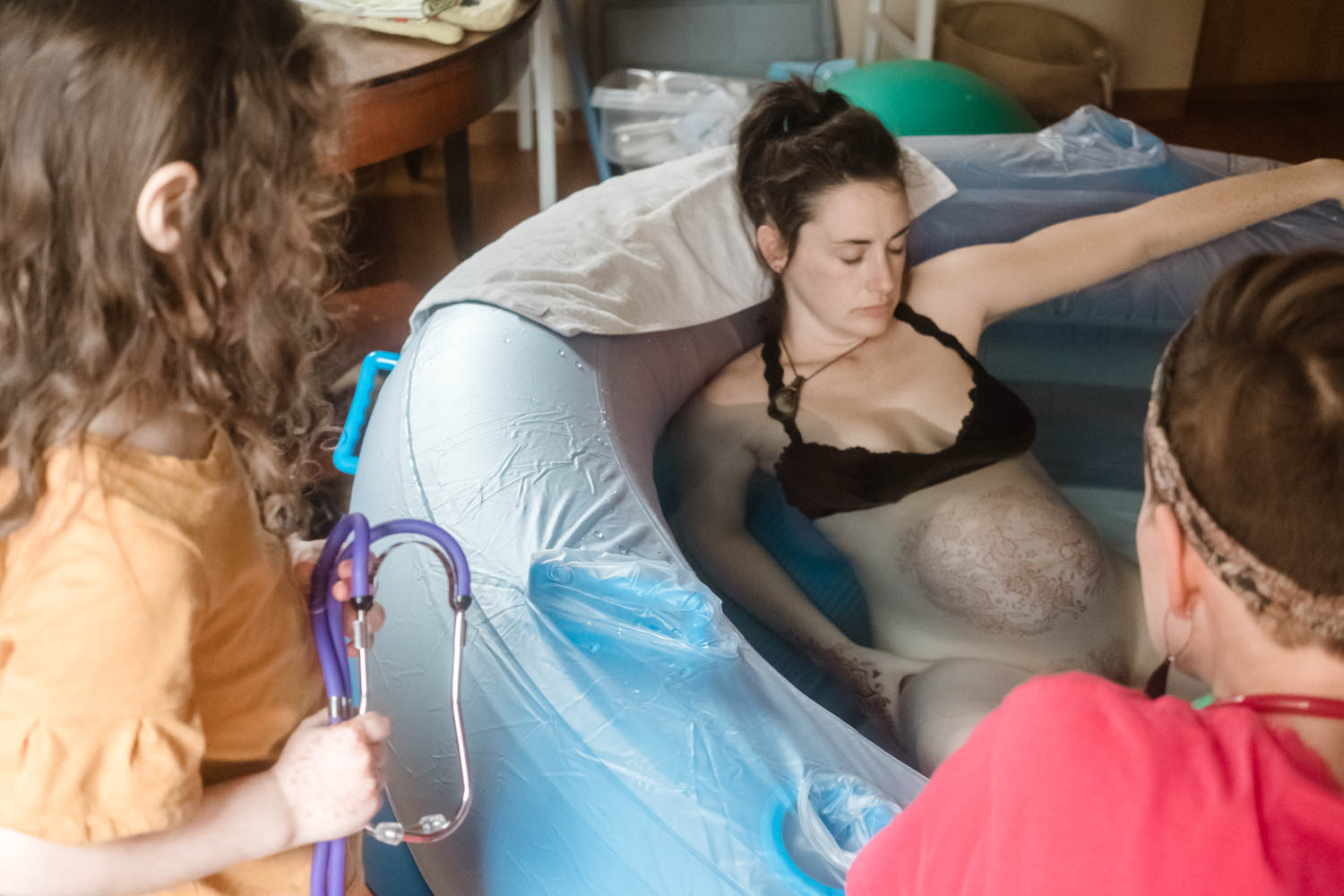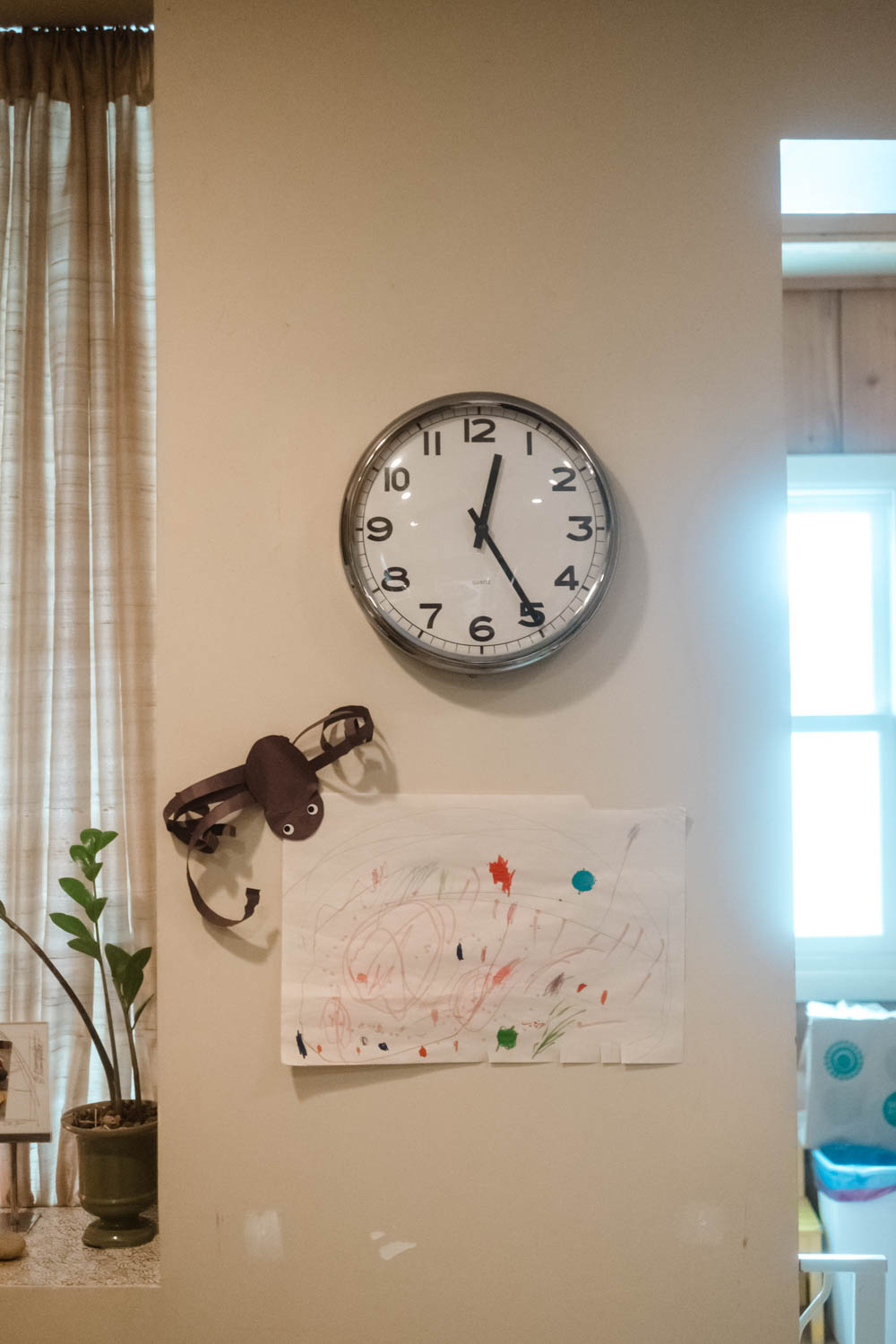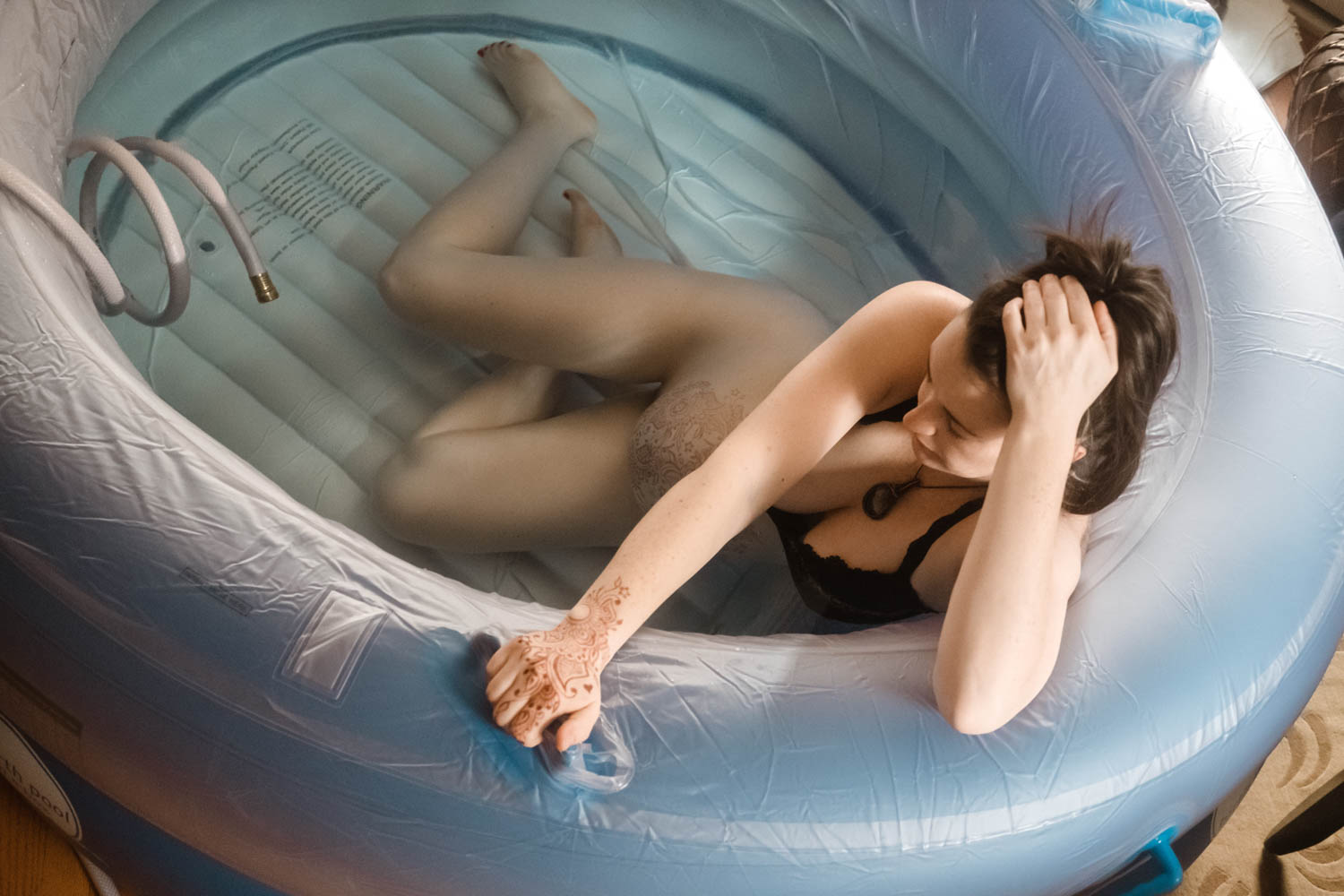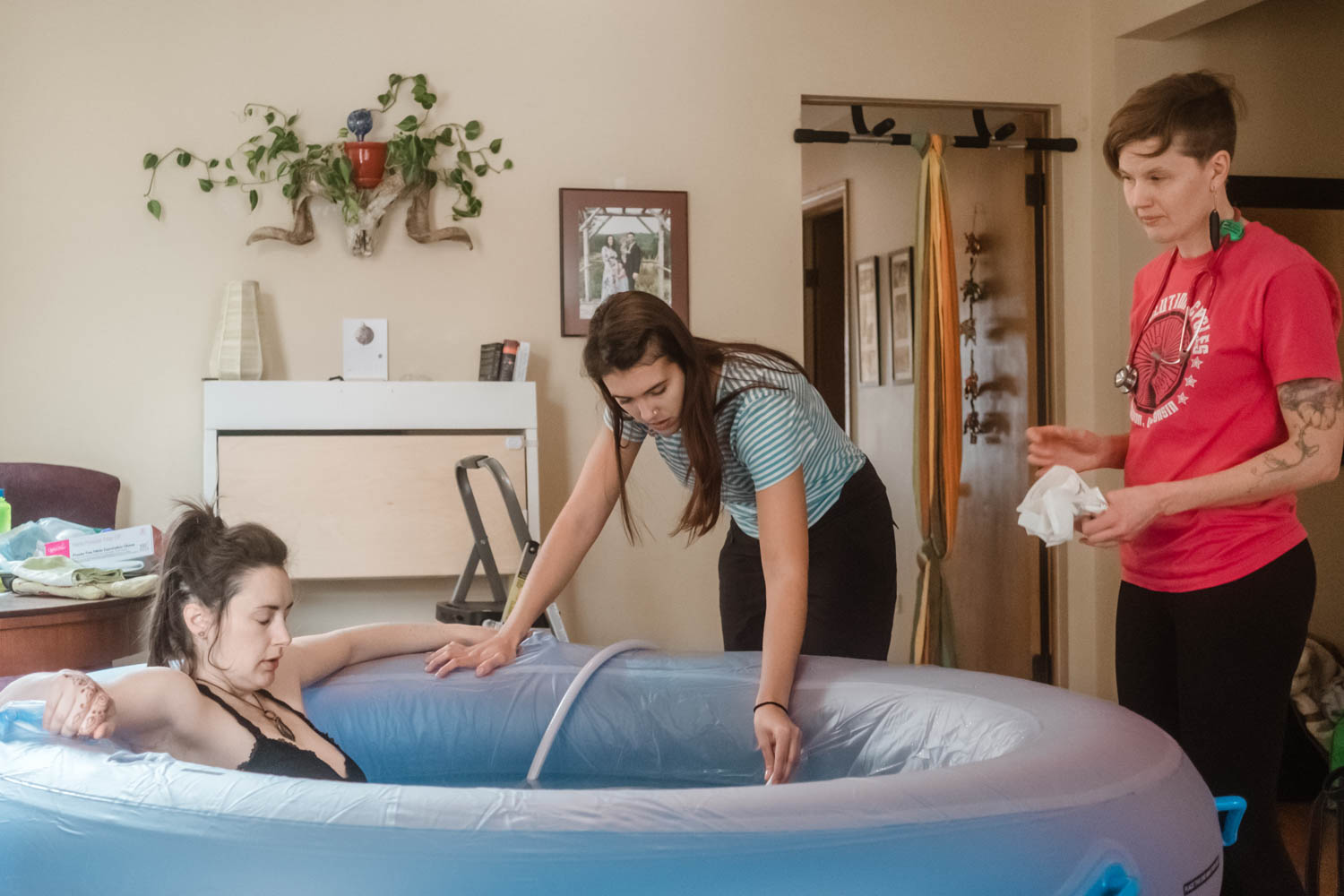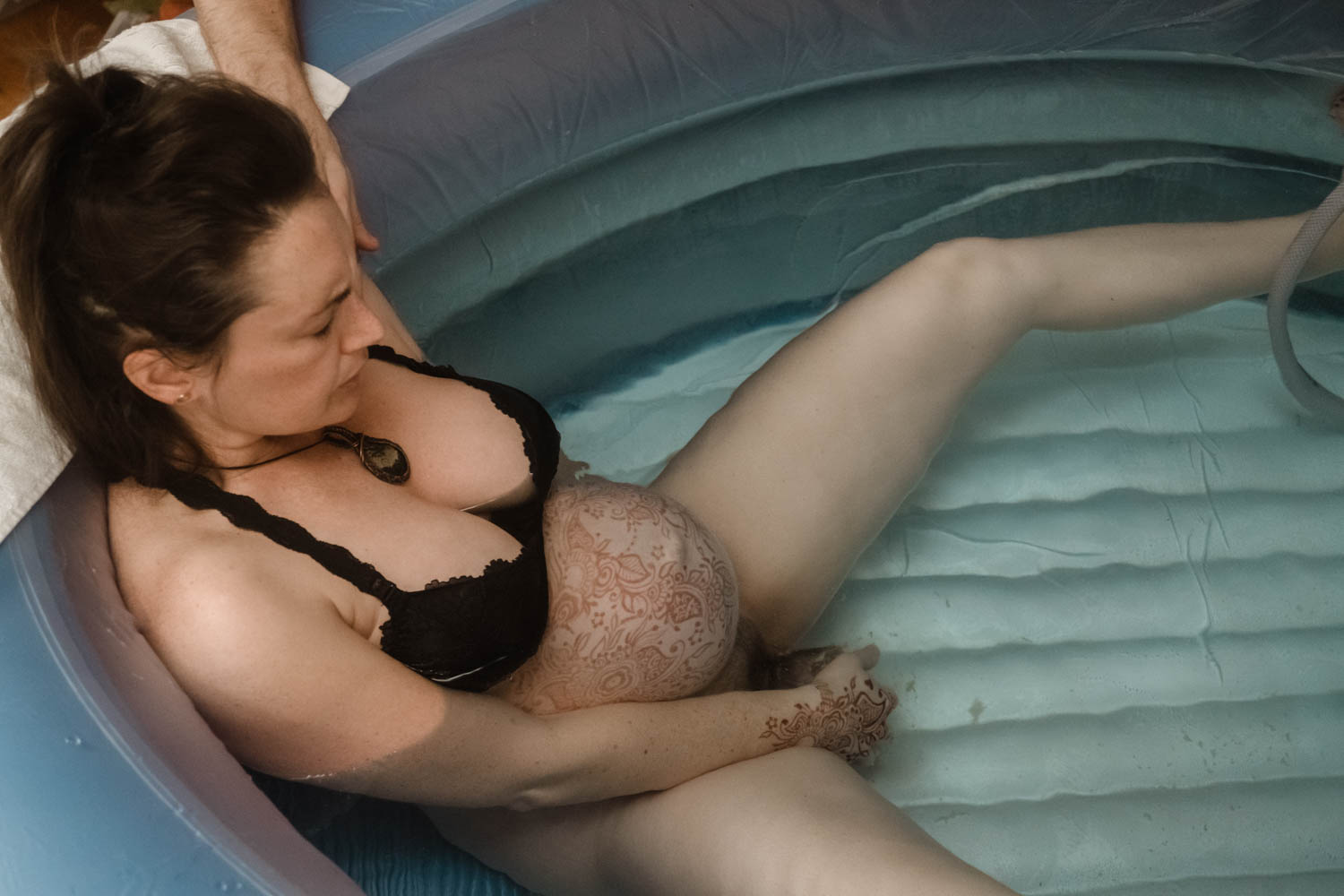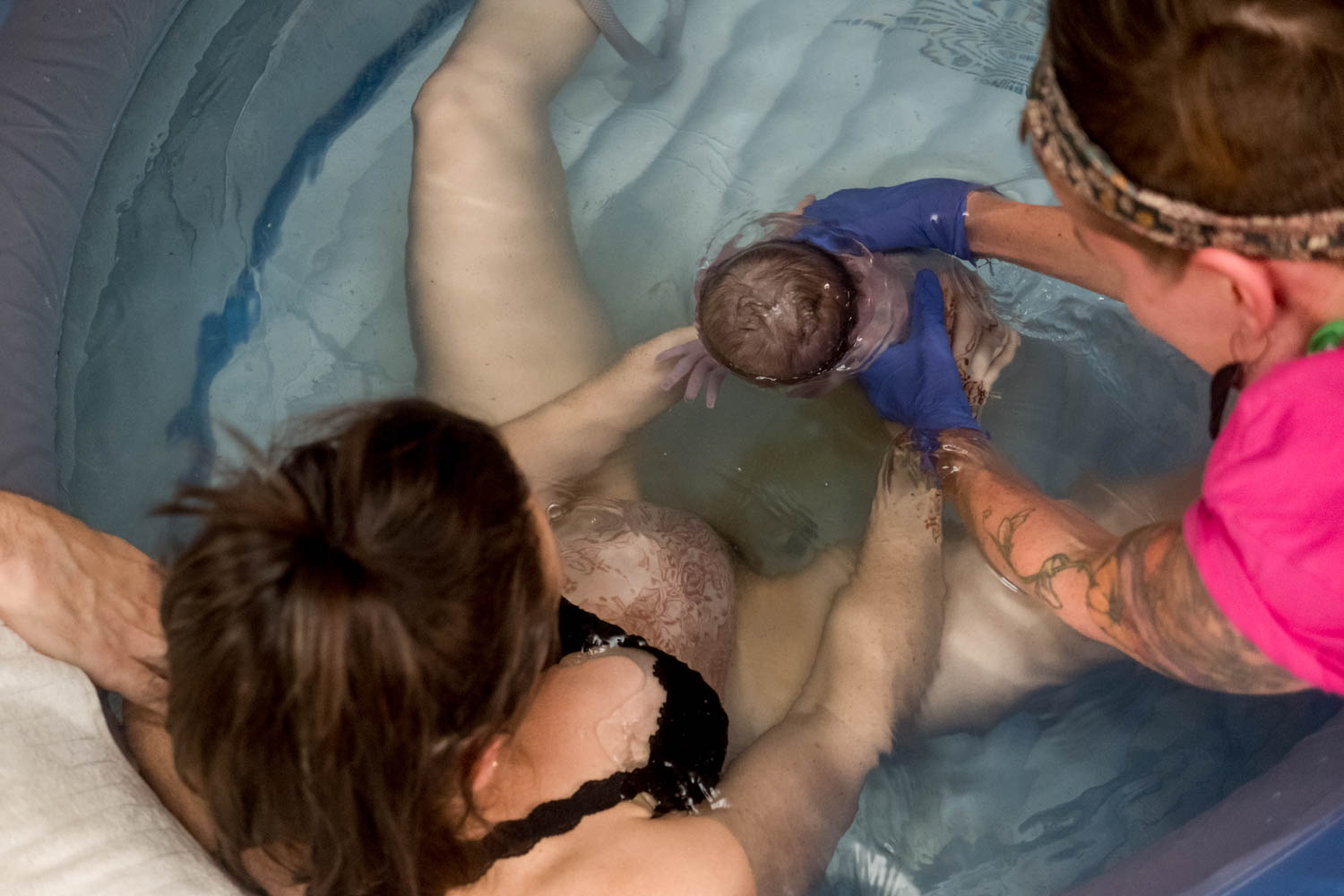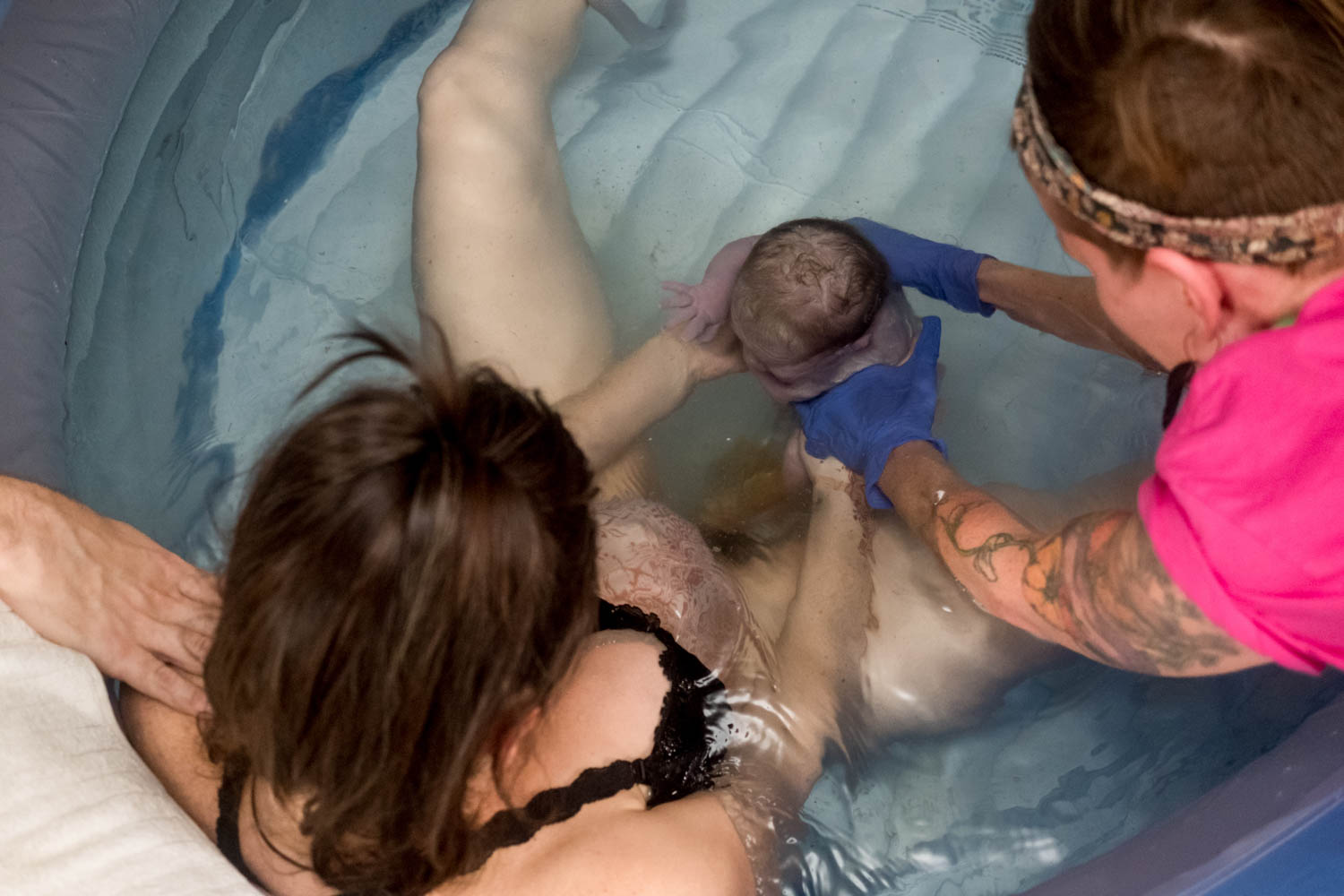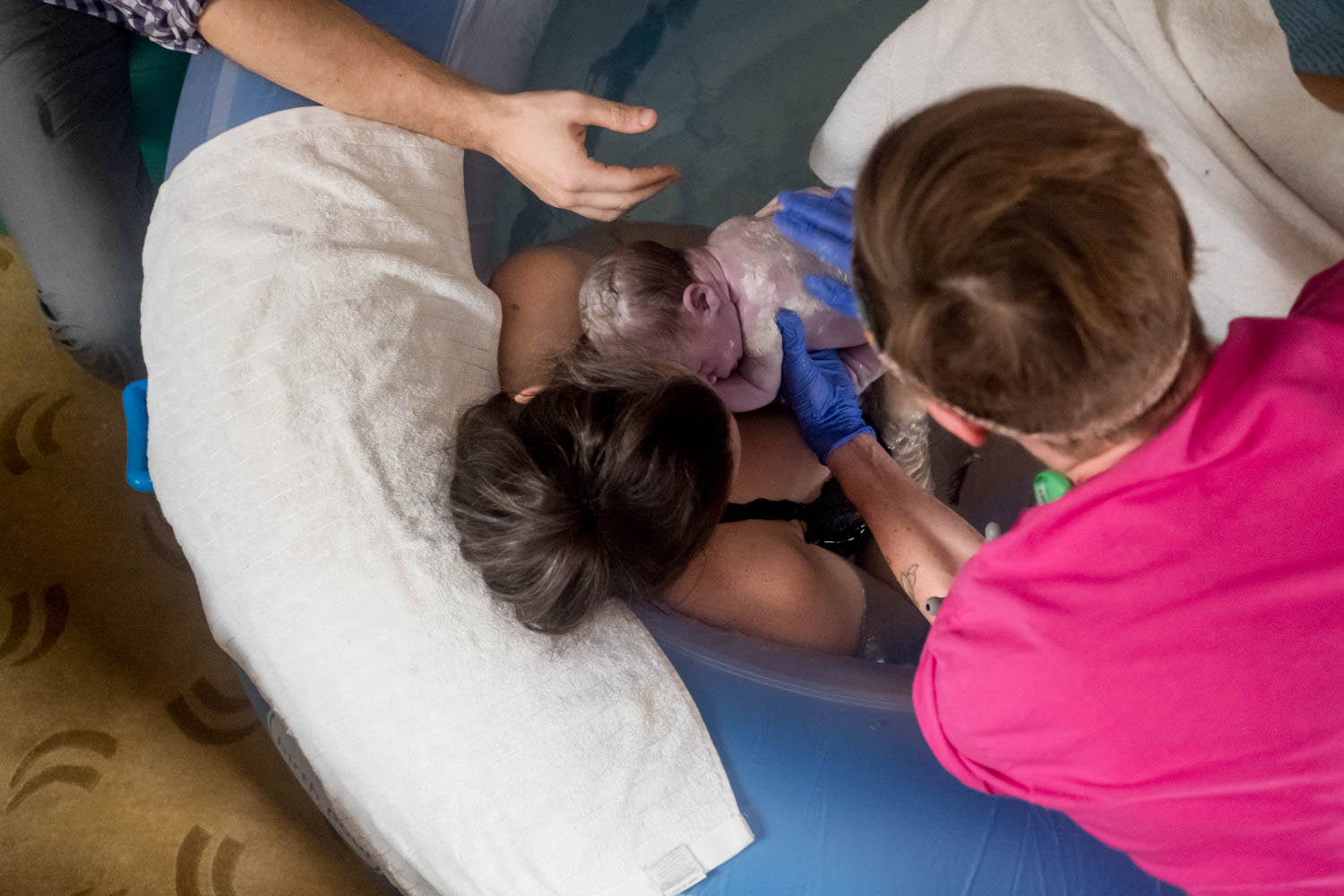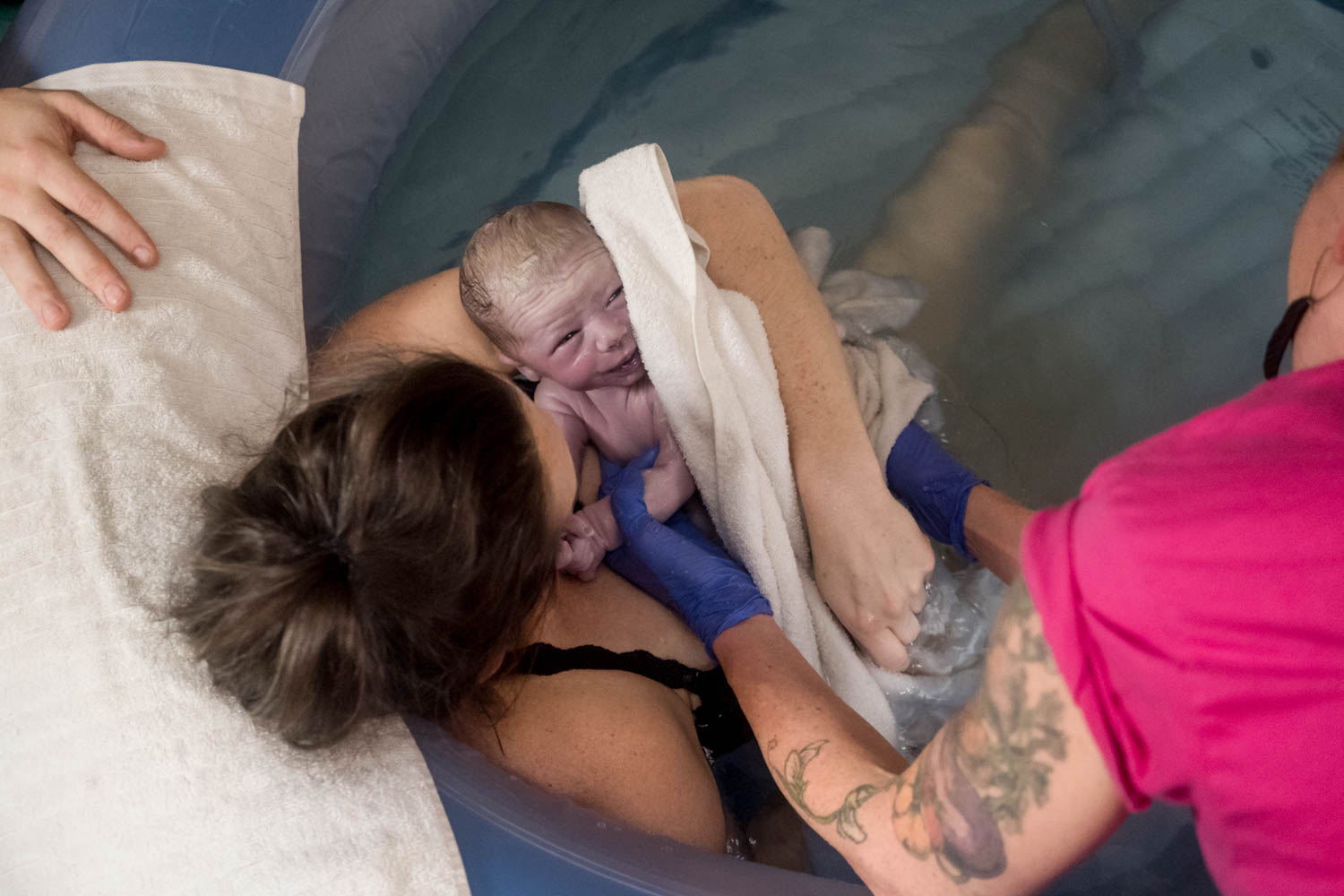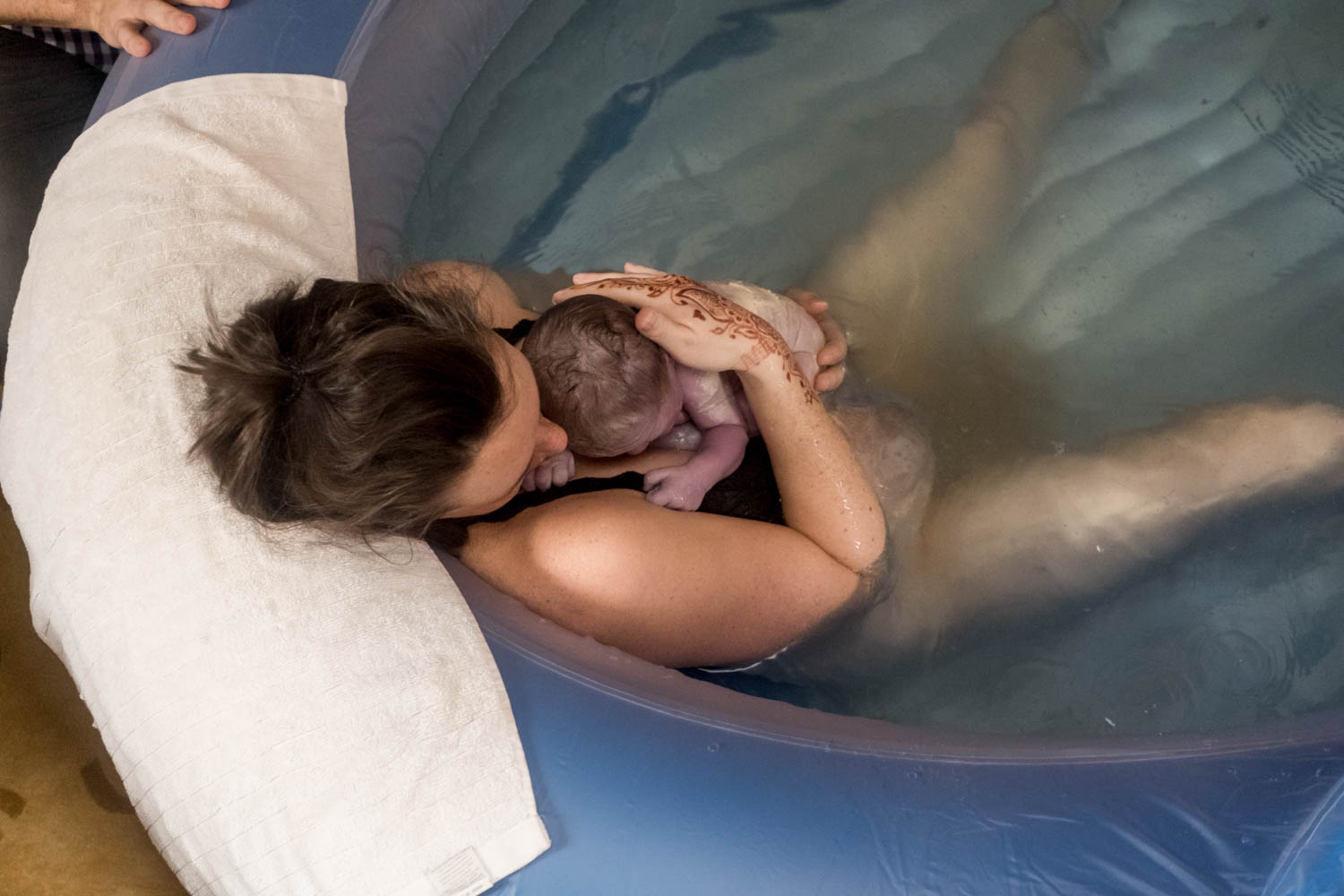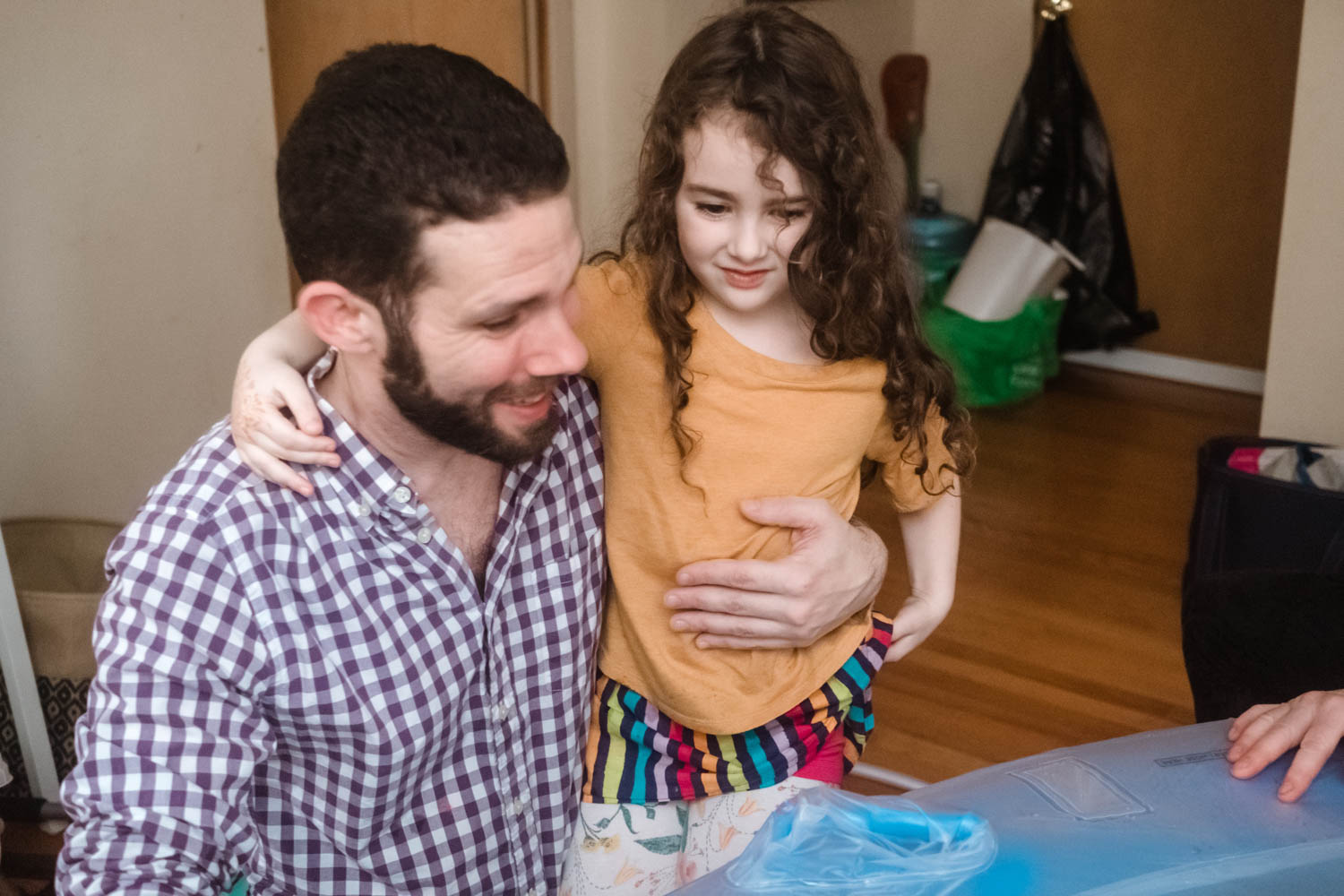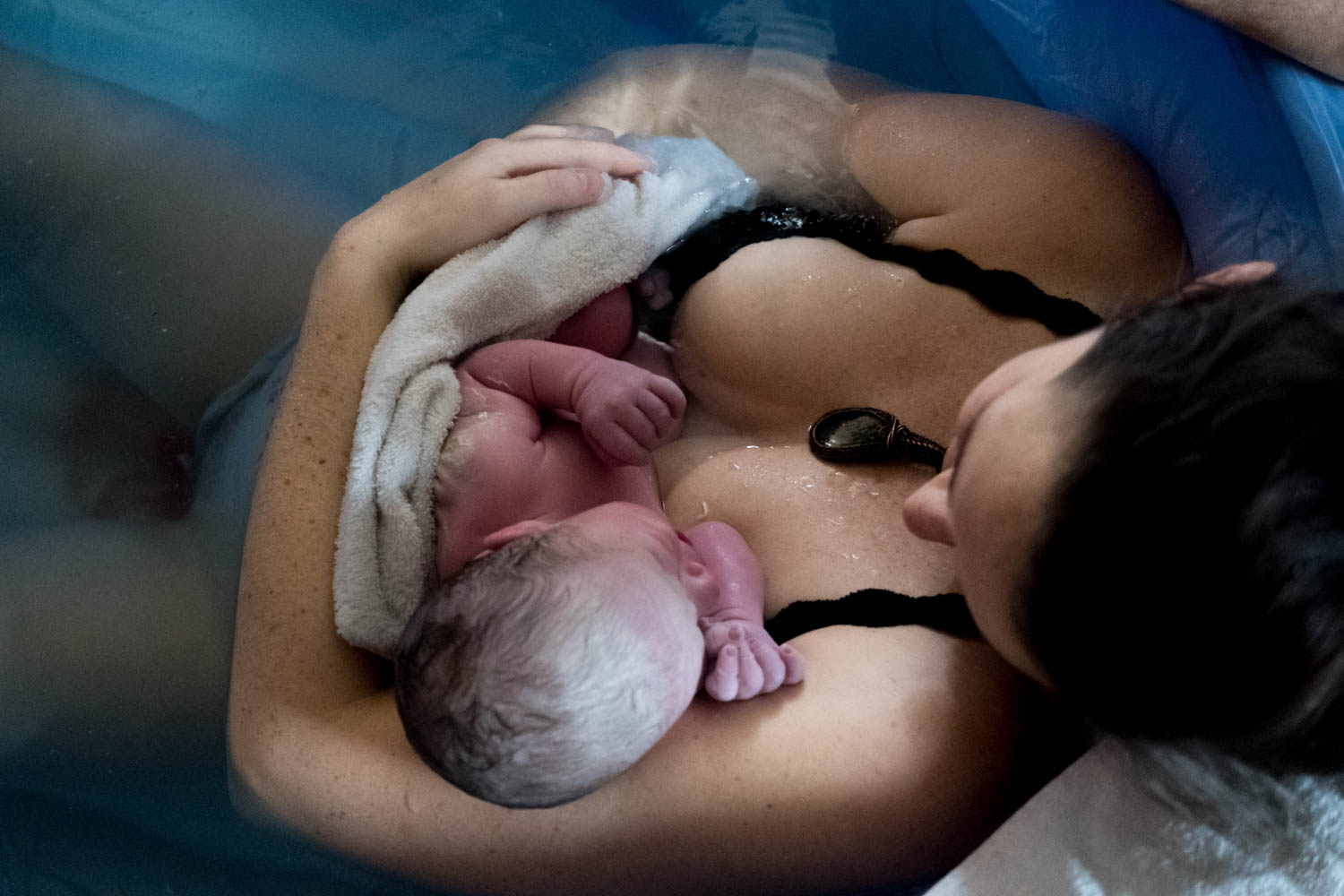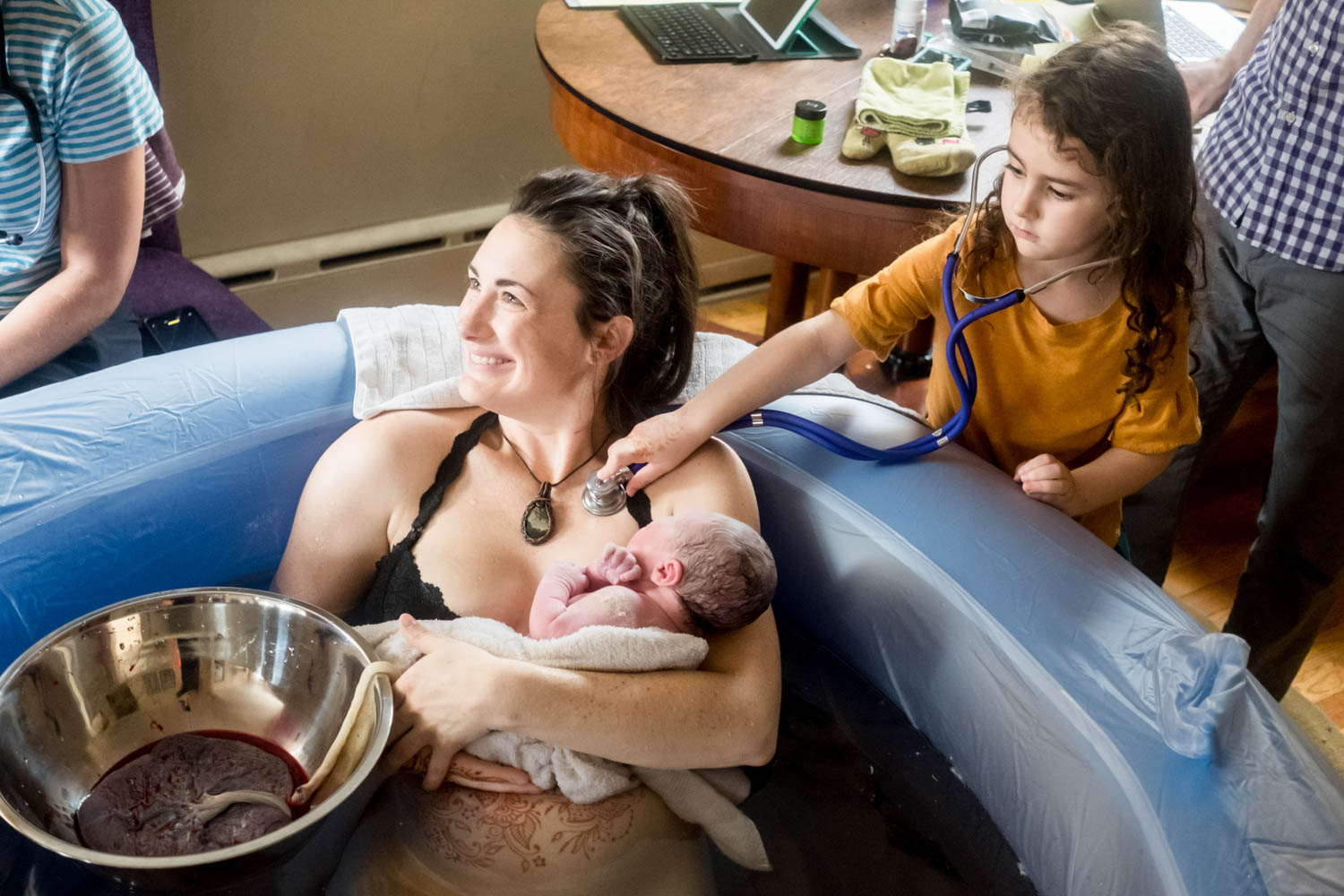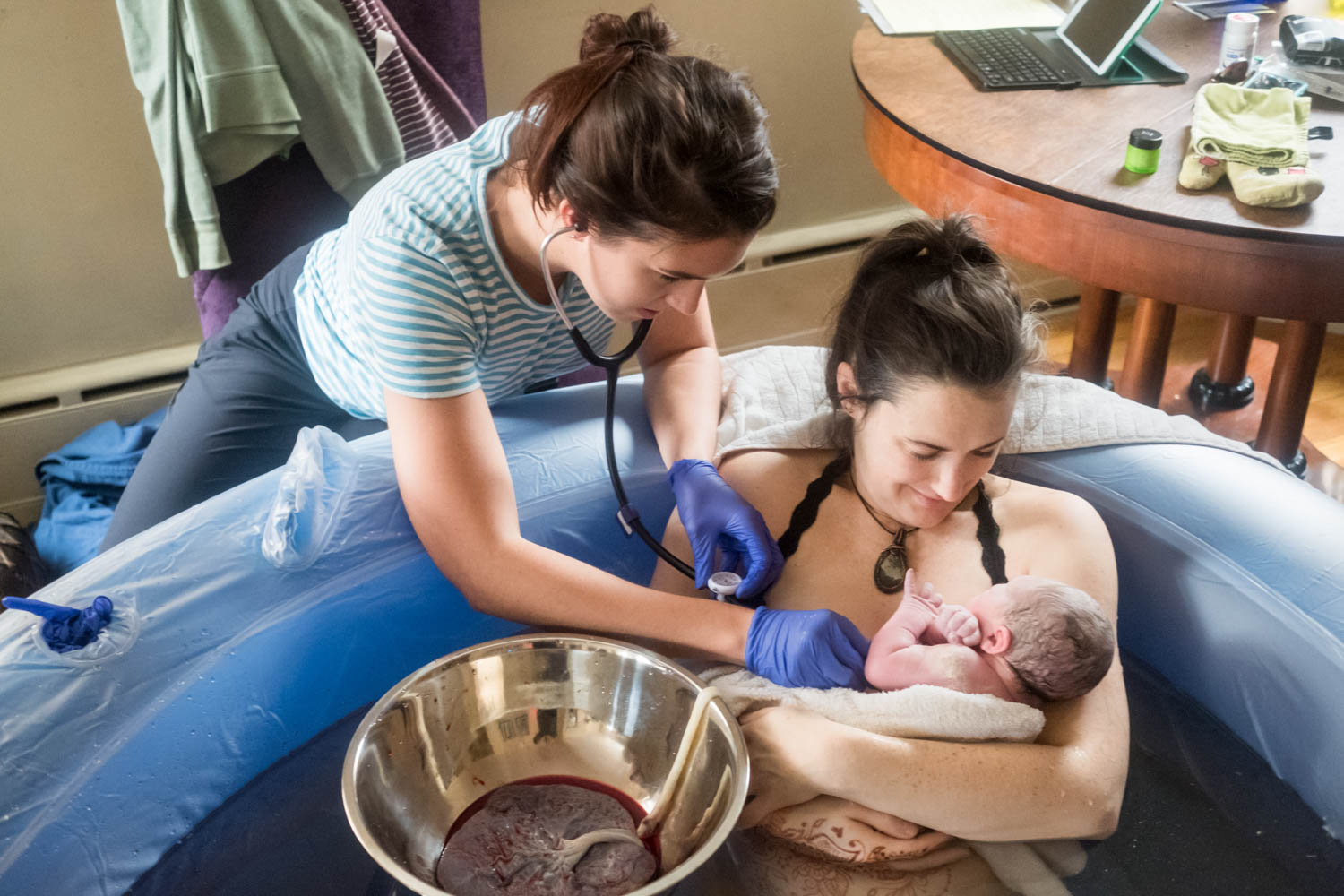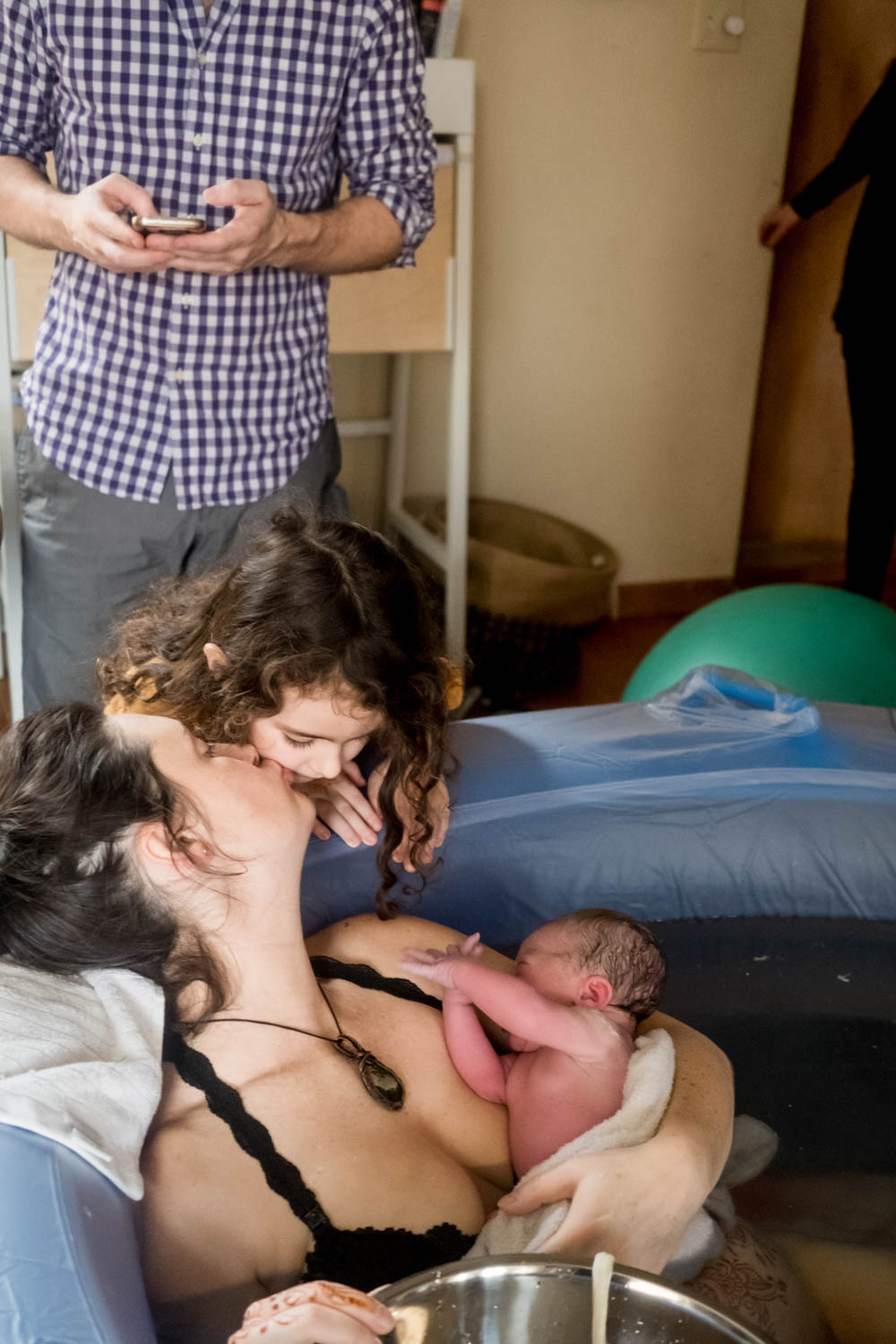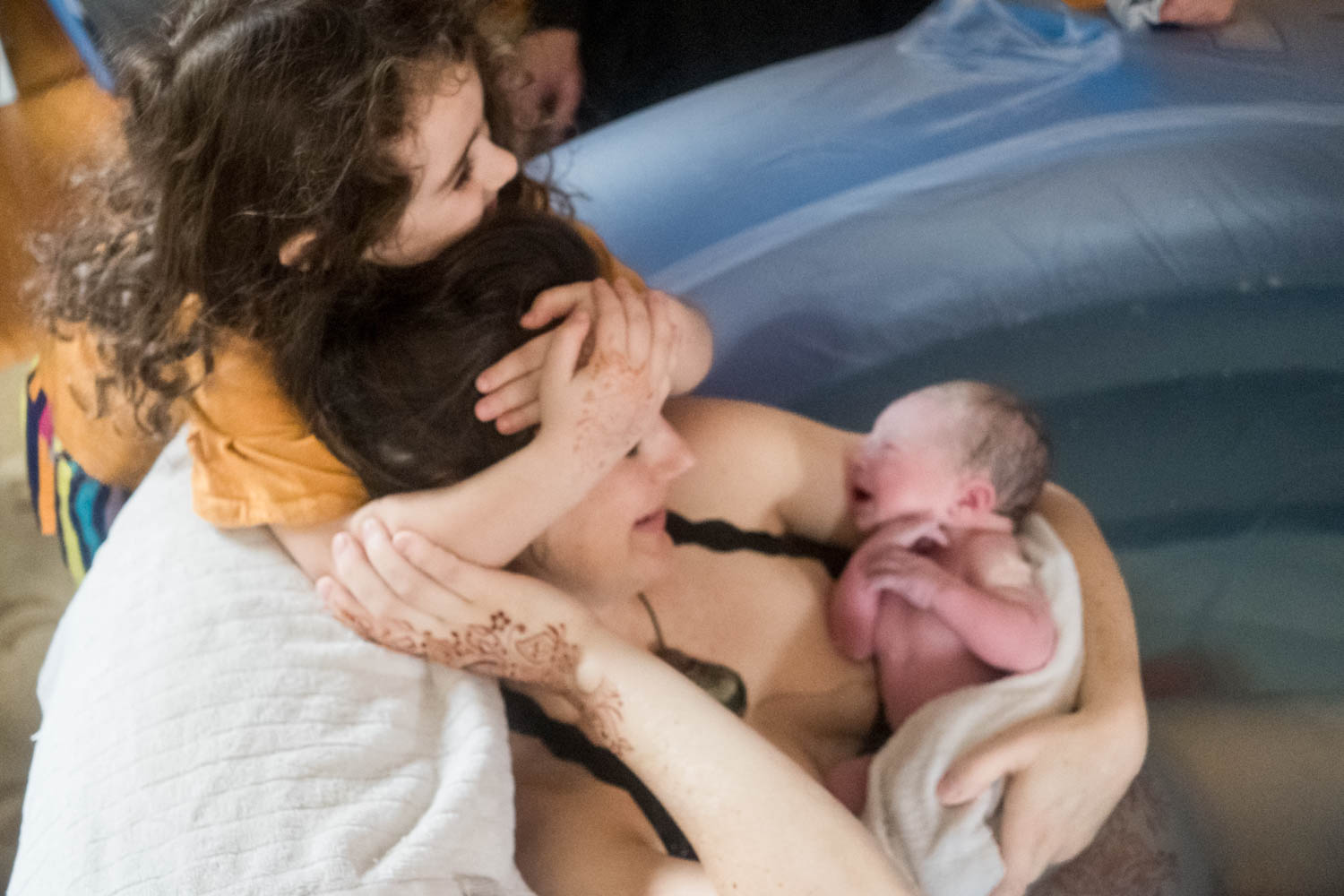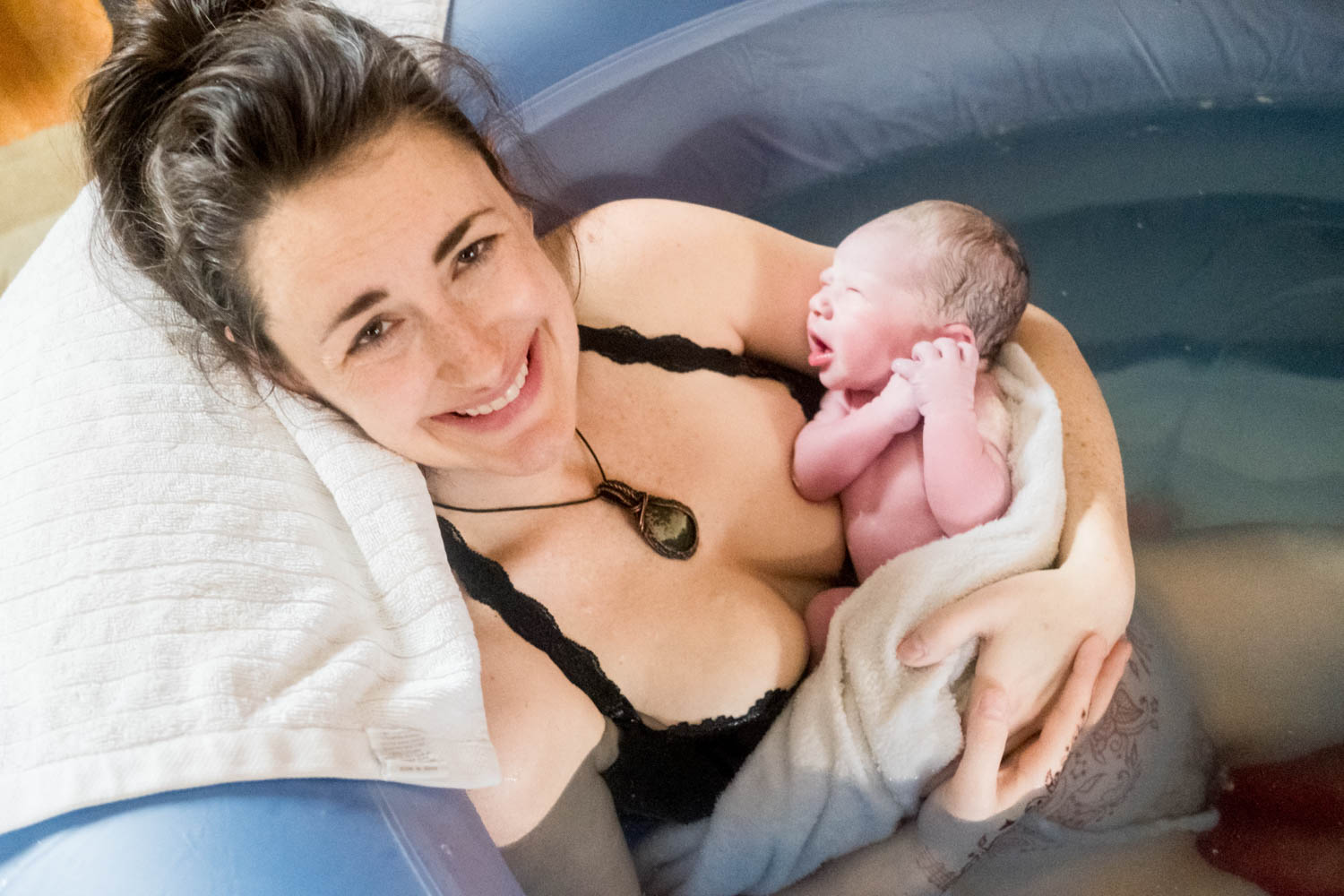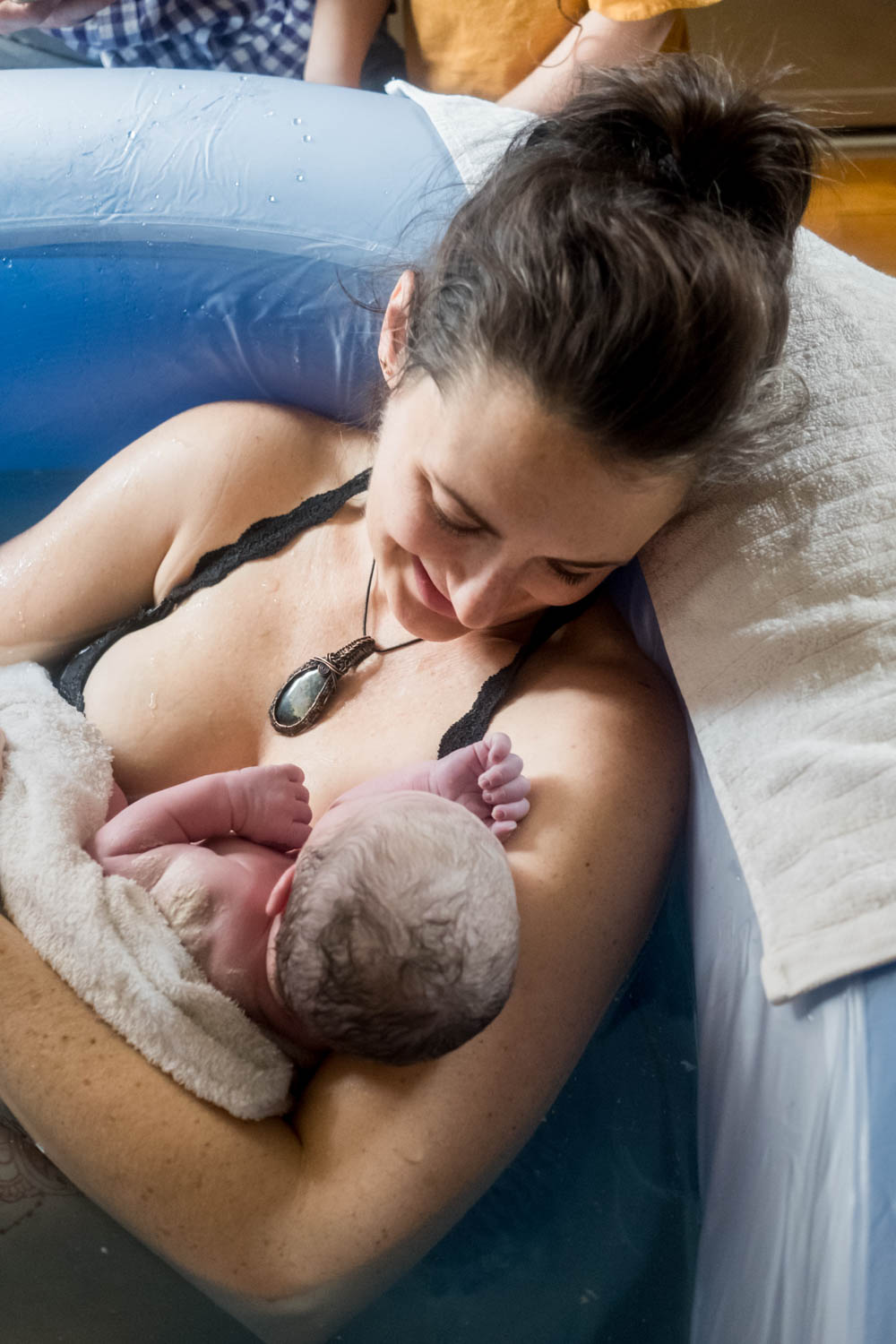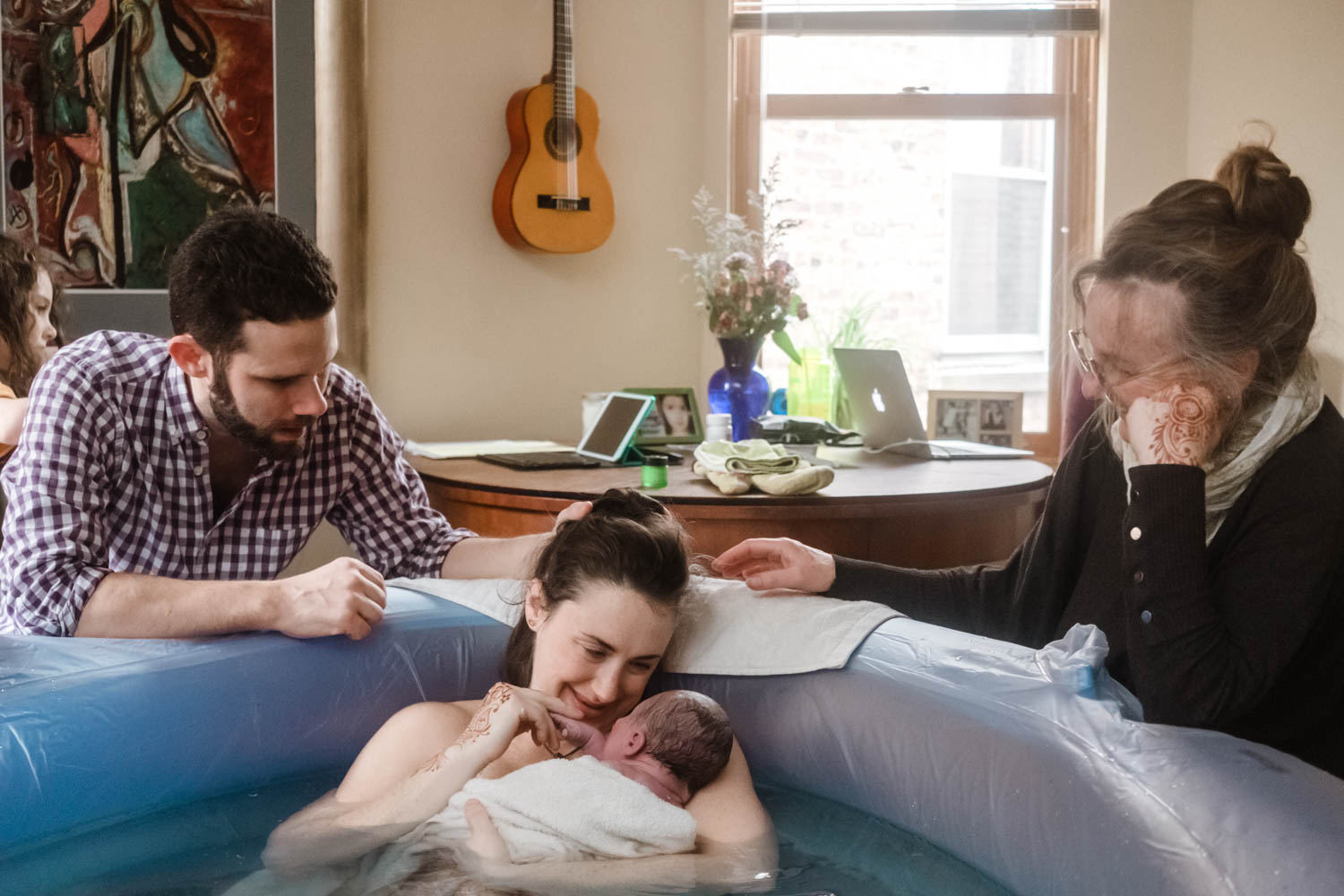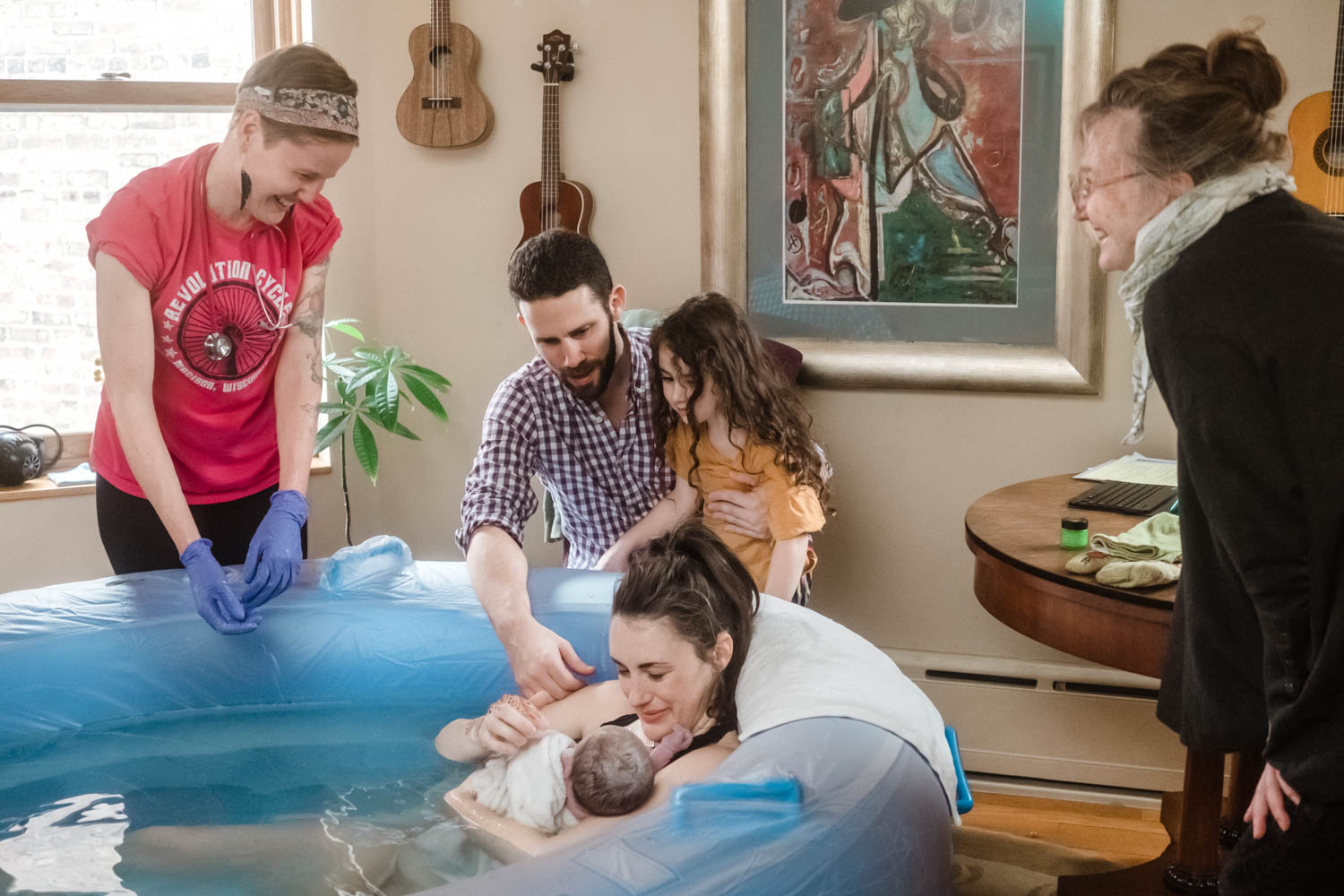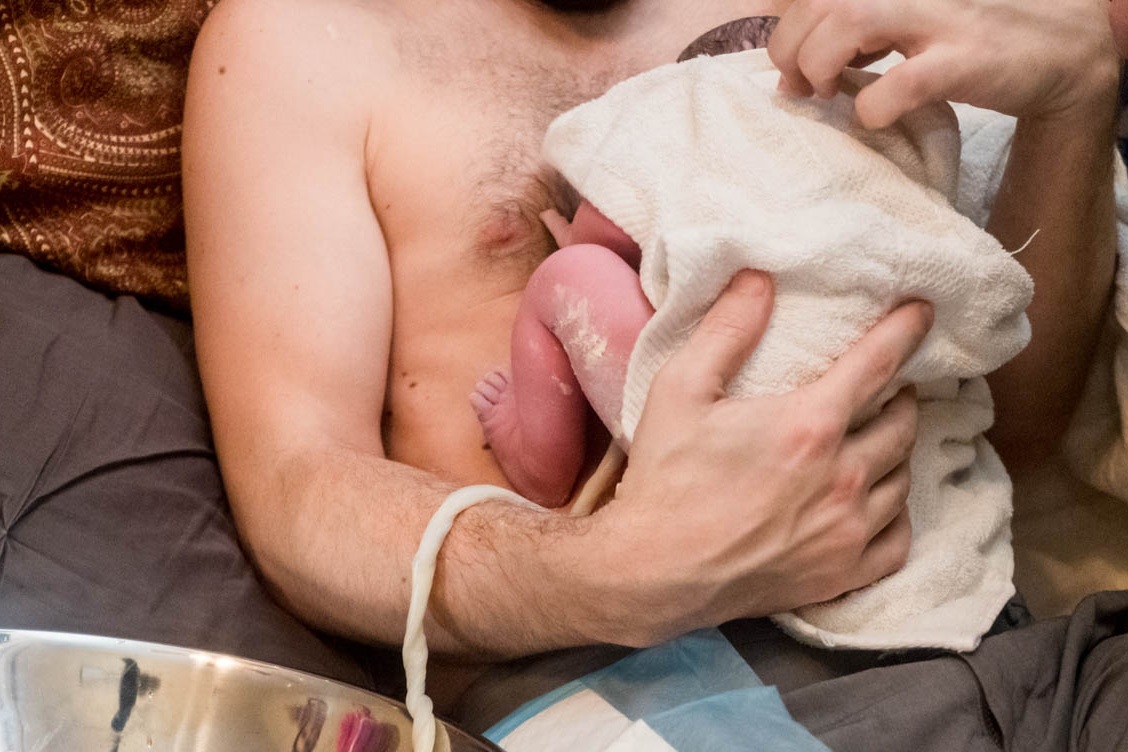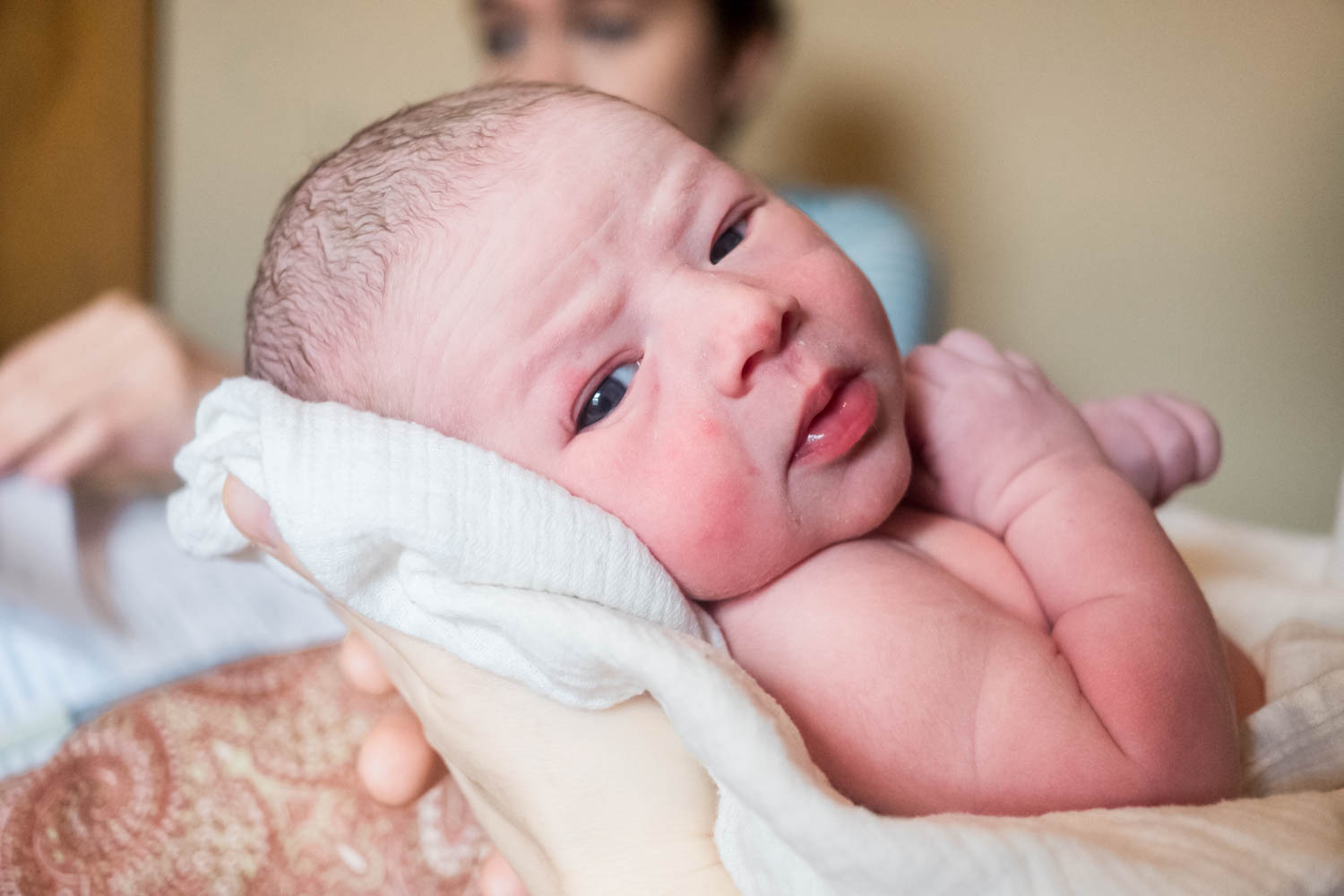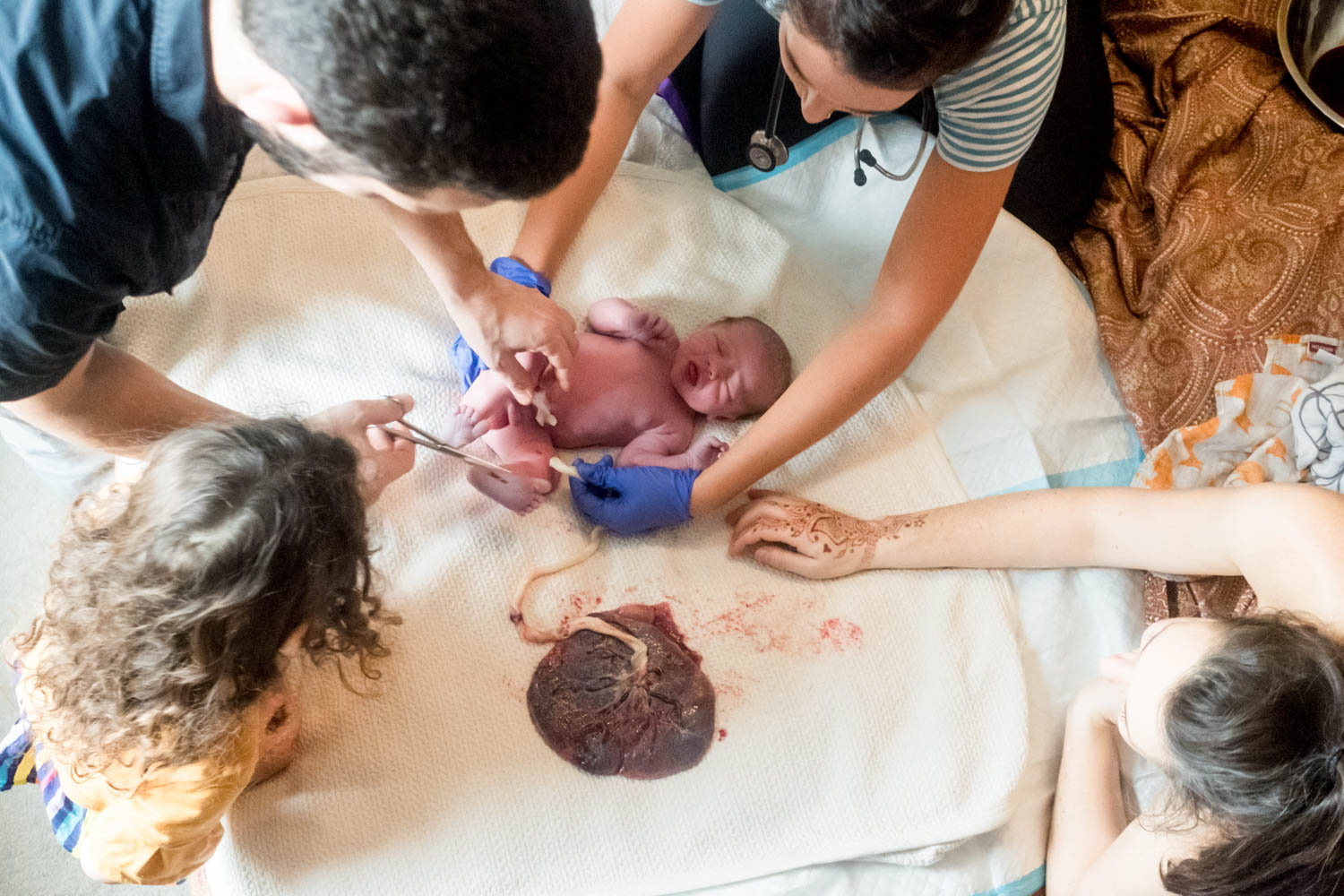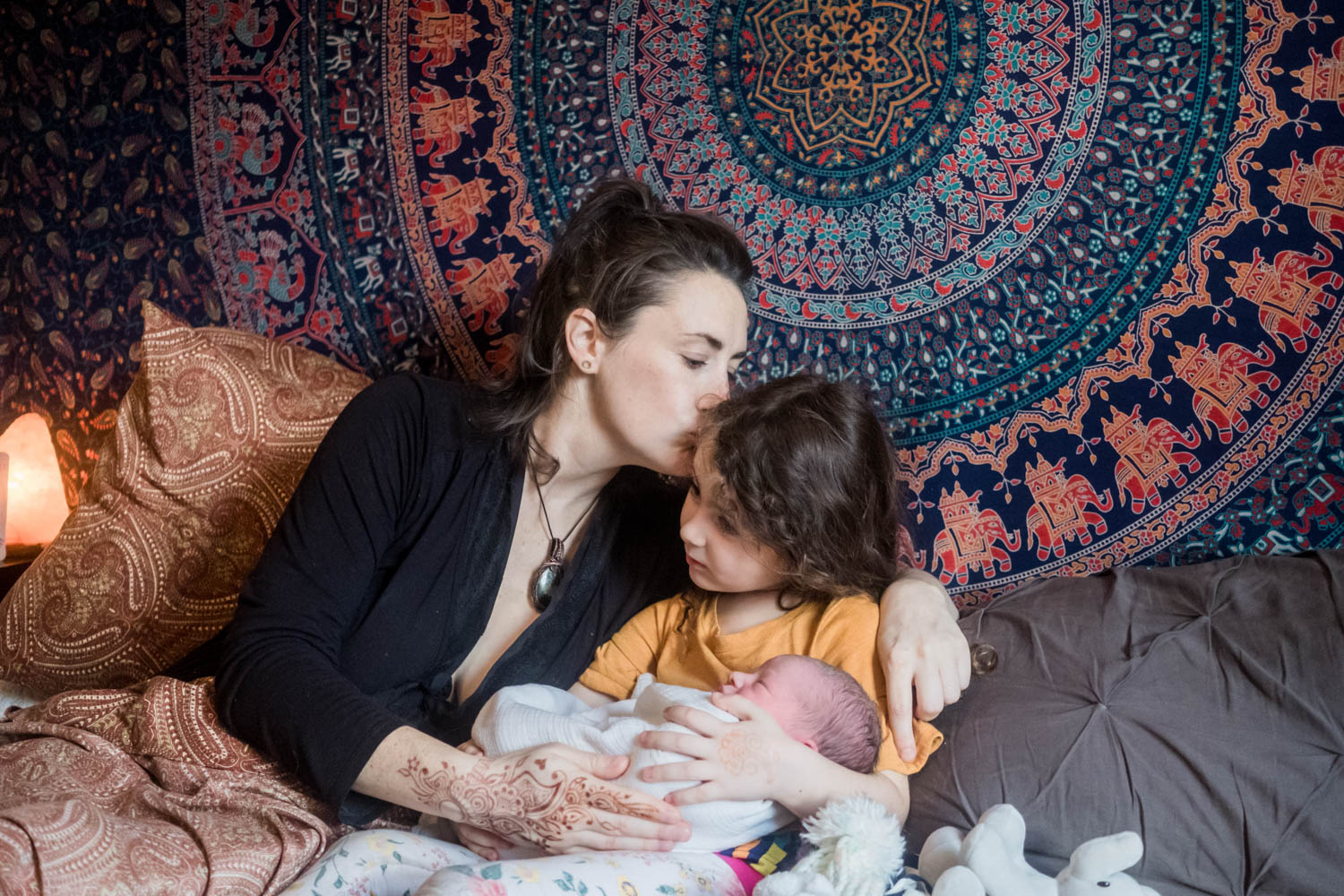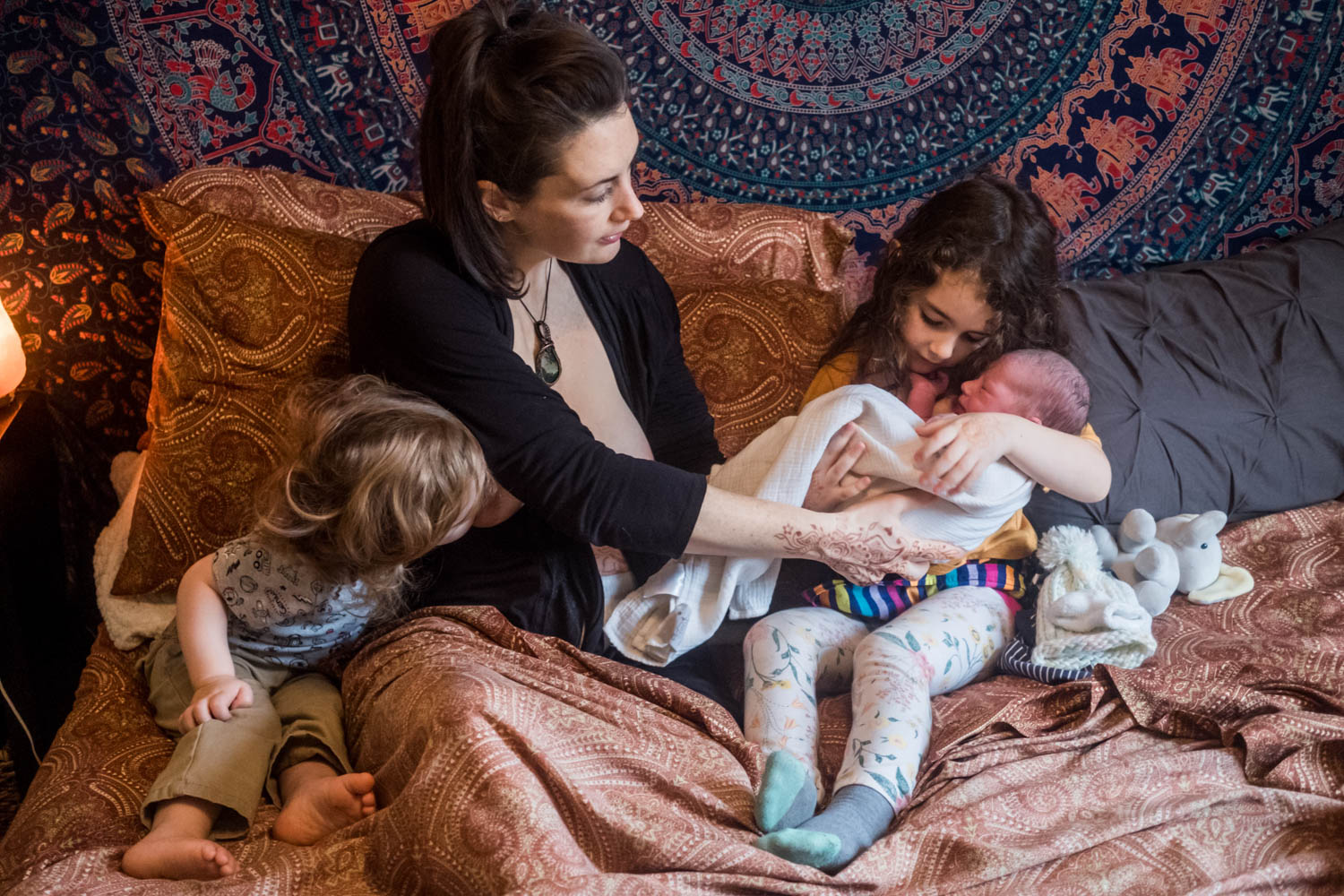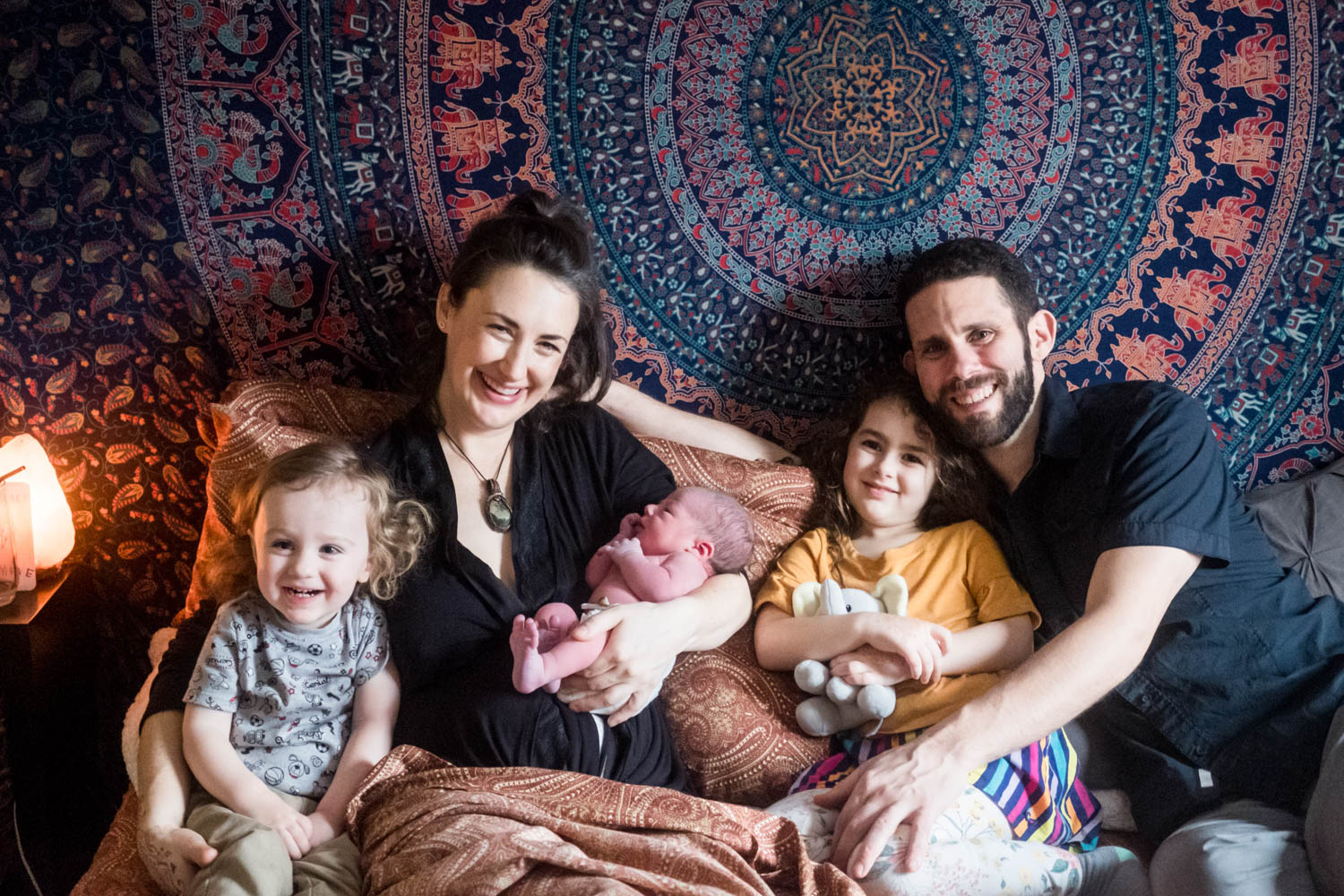Why Families Choose Home Birth - A fascinating peak into the logistics and beauty of home birth in Chicago
To some home birth may seem like a renegade choice. I get it.
I’ve been there. When I had my first I wanted the safety of the hospital. When my birth didn’t go as expected and I was left with a lingering feeling of failure after my non adventurous labor was grossly medicalized, I knew I wanted a different experience next time.
So I looked for a midwife, which is really freaking hard in IL by the way, There simply are not enough licensed providers and Illinois has yet to license CPM’s (Certified Professional MIdwives) which do hold licenses in the following states: Alabama, Alaska, Arizona, Arkansas, California, Colorado, Delaware, Florida, Hawaii, Idaho, Indiana, Kentucky, Louisiana, Maine, Maryland, Michigan, Minnesota, Montana, New Hampshire, New Jersey, New Mexico, Oregon, Rhode Island, South Carolina, South Dakota, Tennessee, Texas, Utah, Vermont, Virginia, Washington, Wisconsin, Wyoming. ( Source: National Association of Professional Certified Midwives.)
It is interesting to note the countries that integrate home birth into obstetrical care versus countries that do not and what the maternal mortality rates are. The countries that achieved the lowest maternal mortality ratio are Finland, Greece, Iceland, and Poland. For every 100,000 births, 3 mothers die. An interesting fact: Finland is the best country to be a mother, according to Save the Children’s 15th annual ranking. The United States hovers at 31 — about the same as last year — but is seeing an increase in maternal deaths, according to multiple studies. ( BBC)
In the U.S According to the CDC about 700 women die each year in the U.S. due to pregnancy or labor complications. About 3 of 5 maternal deaths could be prevented.
The Netherlands has the highest number of home births in the world The also only have about 7 maternal deaths for every 100,000 . The U.S. on the other hand has most recently been surveyed by the CDC to have about 23.8 maternal deaths per 100,000 births. ( So why do the Dutch cherish home births? The Dutch do not see pregnancy as an illness and home birth is the norm. The Dutch Health Ministry believes that what can be kept out of the hospitals, should. They are very much geared toward not medicalising birth. Midwifery is integrated into the health care system. A woman is accompanied in her pregnancy, birth and postnatal period by a midwife who is autonomous in her actions and decisions. Emphasis is placed on natural processes, with interventions only occurring when a problem arises.
For this mama, Home is where she wanted to be. This is her third baby and third planned home-birth attended by Gentle Birth Care, one of the longest standing home birth practices in Chicago-Land.
Having a baby at home is hardly a decision you jump into. It is always preceded by hours of research, childbirth education and having access to skilled and legal providers; which is why it’s so important that EACH birthing person has access to a birth attended by specialists in a location they desire.
In addition it’s important to mention that home birth is ideal only for women/birthing people experiencing a low risk pregnancy. Although most home-births go perfectly fine, at times providers will decide to transfer to the hospital for additional care or medication, pain or otherwise.
At this time, in 2020 - out of hospital midwives and specifically in this situation CNM’s (Certified Nurse Midwives) do not have hospital privileges and even if their patient transfers they are unable to continue care. This is another aspect of childbirth that must to progress in Illinois.
——————
Camera Info
I am currently shooting with a Fuji xt2, it’s exremely light to hold in front of you, and has a flip screen so you can see what you are shooting. I do believe I was on a step stool at the time, and I was able to capture the amazing progression of babe being born.
One of the many reasons that families choose home is the possibility of a family centered birth.
Family Centered Birth = viewing the birth as a normal physiological event that results in a new family member. And so, it’s important that the immediate family is present and participating in the transition.
For this little one’s birth many people were present including
Family: Dad, Little Sister, Little Bro joined shortly after, Grandma
Staff: Midwife, Assistant. At home births you will most likely find a midwife and 1 or 2 assistants, possibly also a doula.
The assistant performs the duties that a nurse would at the hospital, BUT she never leaves your side and you are the ONLY patient she is monitoring. Which in turn makes the birth safer, because variances and warning signs can be caught within seconds. The midwives role is to help the baby safely transition to the world. This is an incredibly intimate event, no matter where you give birth, what is great about home birth is that the same people are with you and unless you ask for space will NOT leave your side. You not only have uninterrupted support but the peace of mind knowing you have a medical team paying attention only to you and your baby.
I was also able to get a really cool photo of this very plump and filled-with-blood umbilical cord.
Delayed cord clamping, for even 5 minutes has numerous benefits to the infant such as an increase in iron stores and brain myelin, which aids in development., according to a recent study published in the December issue of The Journal of Pediatrics. It can increase the babies blood volume by a third.
Look at the cord below, it is completely white compared to the photo above
Delayed cord clamping and cutting is standard at home births, usually 10-60 minutes.
Cutting the cord quickly may happen if it’s short and mom can’t reach their baby or in case of an emergent situation.
Once it is evident that mom and baby are safe and healthy its time to relax together and participate in baby’s first exam and measurements. Having a baby at home doesn’t mean you are foregoing a specialist looking over the baby.
Out of hospital midwives are trained to care for babies in the first hours of life and are well as what is normal and what requires pediatric attention.
Your baby can receive the same vaccinations, even at a home-birth.
During a hospital birth baby does not have a well exam until the next day, when your pediatrician is making rounds. Babies born at home births receive that same exam within 2-3 hours of birth and 24 hours after birth an assistant will come back for the PKU test and Rohm injections if needed. As well as to check in with YOU and to finalize birth certificate forms.
There is no denying that there is a different level of respect for the birthing family at home birth than at hospitals.
For me that respect and feeling of safety is what pushed me towards a home birth with my second kiddo.
Did you have a baby at home? Or are you considering it?
Share your story!!

